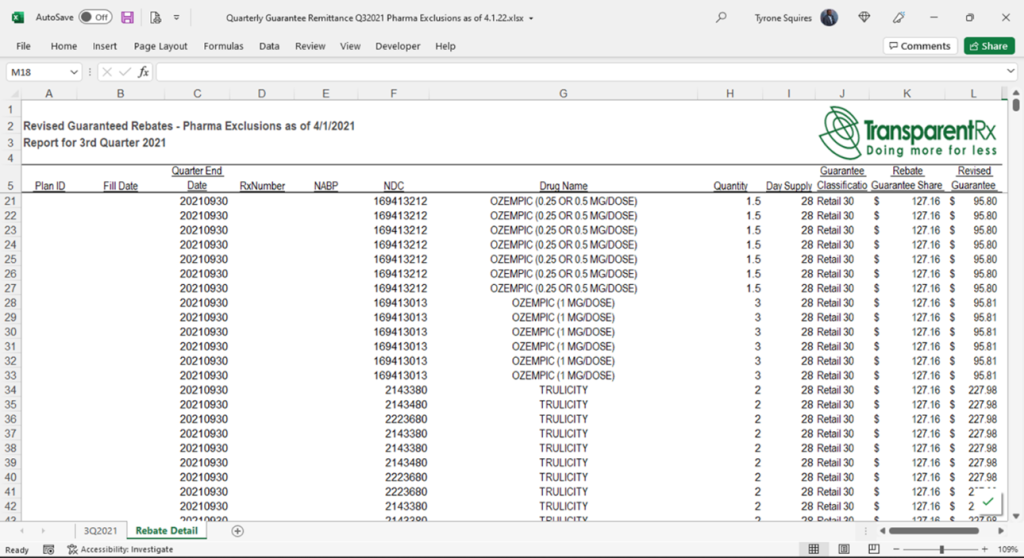In addition to 6 things every transparent PBM should do, PBM duties may include creating retail pharmacy networks, maintaining drug formularies, claims adjudication, and negotiating rebates with drug manufacturers. To help health insurance control drug costs, PBMs were developed in the 1960s. By moving demand among rival replacement medications, PBMs can encourage price competition among prescription drugmakers.
Manufacturers also provide rebates to PBMs in exchange for having their medications included favorably on a pharmacy formulary. PBMs then pass these rebates on to insurance or employers. For rebates to truly benefit final consumers, the PBM industry must be transparent [i].
6 Things Every Transparent PBM Should Do:
- Provide unrestricted access to claims data. Unions, health plans, health systems, commercial and public sector employers shouldn’t get any push back when requesting claims data. Minimum data elements include NDC, date dispensed, quantity, days’ supply, and pharmacy identifier (i.e., NABP, NCDPD or NPI).
- Allow clients to terminate, for any reason, with 90 days’ notice. Opaque pharmacy benefit managers are unwilling to sacrifice revenue streams that are bad for customers. Terminating one of these deals early requires an act of congress.
- Lower the copayment to match the total cost of the drug. Prescription drug overpayments (also known as “clawbacks”) occur when commercially insured patients’ copayments exceed the total cost of the drug to their insurer or pharmacy benefit manager[ii].
- Disclose or not take spreads. A spread is the difference between what a PBM takes in (cash) and the amount it pays out. Therefore, spreads occur with ingredient cost and rebates. Spreads are harmful when third-party payers are unaware or unable to perform a full accounting of the total amount of spread being paid.
- Deliver a 90% or better generic dispense rate (GDR). High GDRs are driven primarily by cost-effective formulary and drug utilization management programs.
- Provide every client with a rebate remittance report. A rebate remittance report is like a claims file with two additional data elements; rebate guarantee amount and rebate amount collected. Rebate remittance reports allow plan sponsors to compare notes.

5 Things Every Transparent PBM Should Do
What PBMs are (completely) passing on in rebates and network discounts is unclear. In fact, some economists contend that the PBM market’s consolidation and opaque pricing are two factors contributing to rising pharmaceutical prices. Health insurers have started vertically integrating with PBMs, in reaction to this insufficient pass-through of rebates. Because of this, the biggest insurers in the nation as well as several smaller ones already own their own PBMs or share an owner with one.
[i] Garthwaite, C. January 2022. Which Markets (Don’t) Drive Pharmaceutical Innovation? Evidence From U.S. Medicaid Expansion. NBER. https://www.nber.org/system/files/working_papers/w28755/w28755.pdf
[ii] Van Nuys, K. March 2018. Overpaying for Prescription Drugs: The Copay Clawback Phenomenon. USC Schaeffer. https://healthpolicy.usc.edu/research/overpaying-for-prescription-drugs/
